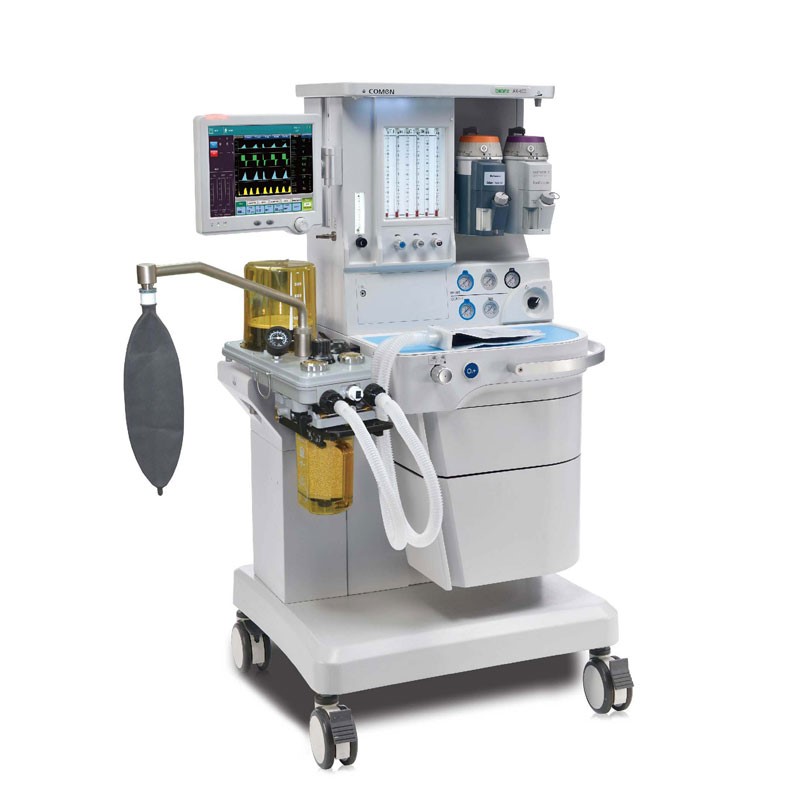Throughout the world, countries are struggling to ensure they have enough medical supplies and equipment to deal with the COVID-19 coronavirus pandemic. While regular medical supplies are starting to flow again from China and other producers, the need for ventilators still grows for severe case-patients in hospitals and other health care facilities. In order to prepare for a possible shortage of ventilators (and in certain locations, bolster the already short supply of ventilators), the FDA has deployed the Enforcement Policy for Ventilators and Access and Other Respiratory Devices During the Coronavirus Disease-2019 (COVID-19) Public Health Emergency. As part of the policy, they have included guidelines for increasing the availability of ventilators, in which one of these measures is to allow anesthesia machines to be used as emergency ventilators if no long-term ventilators are available for patients at a hospital or other medical facility. These are meant to augment current procedures and controls, not replace them.

Recommending the Use of Anesthesia Machines during COVID-19 Health Emergency
While anesthesia machines are not generally used only for their ventilation capabilities, using newer models of anesthesia gas machines without the anesthesia gas and the proper viral filters means that hospitals that have anesthesia machines can now repurpose them temporarily to act as life-saving respirators for patients of severe cases of COVID-19.
Noted on the FDA website article, ‘Ventilator Supply Mitigation Strategies: Letter to Health Care Providers‘. “For any patient needing ventilatory support, anesthesia gas machines capable of providing controlled ventilation or assisted ventilation may be used outside of the traditional use for anesthetic indication. Because of significant differences between the anesthesia gas machine and traditional critical care ventilators, use or supervision by an anesthesia provider is recommended. Refer to the manufacturers’ websites for specific instructions on the safe use of anesthesia gas machines for this indication.”
Not all Anesthesia Machines are Useable as Ventilators
As stated by the FDA article, healthcare providers should first and foremost contact the manufacturer of their anesthesia gas machines to ensure that they can properly be fitted to act as a ventilation device for patients with severe cases of COVID-19. There are differences between different anesthesia gas machine mechanical ventilation components that could make them less viable as a standalone ventilator system, especially older models, as newer models have more modes of ventilation and flexible settings available.
Posted by the American Society of Anesthesiologists, the APSF/ASA Guidance on Purposing Anesthesia Machines as ICU Ventilators document mentions. “Anesthesia ventilators with compliance compensation and tidal volume delivery unaffected by the fresh gas flow are preferred, as they provide more consistent tidal volume delivery and more accurate monitoring. Anesthesia machines obtained from ambulatory surgery centers or office-based practices may be the least suitable for this purpose; however, they might be used to fill-in for the more capable anesthesia machines that have been moved to the ICU.”
It is also required that the anesthesia machines that are repurposed as ventilators are capable of being fully sterilized, using the proper viral filters for the breathing systems to ensure that there is no cross-contamination between patients.
Ensuring Patients Get Ventilation Support They Require
MyBioGate has a full range of medical supplies, equipment, and machinery to help provide healthcare to patients in need around the world. If you require anesthesia machines to act as ventilators, then contact MyBioGate today to put in the supply order. For any and all updates on COVID-19 resources available from MyBioGate, check out the website.
